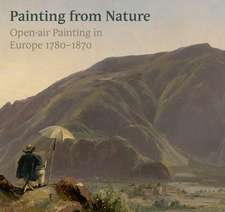The Human Touch: Making Art, Leaving Traces
Autor Elenor Ling, Suzanne Reynolds, Jane Munroen Limba Engleză Hardback – 2 apr 2021
Drawing on artworks spanning four thousand years and stretching across the globe, this book offers new ways of looking at the fundamental role of touch in the human experience. In a series of essays, the authors explore anatomy and skin; the relationship between the brain, hand, and creativity; touch, desire, and possession; ideological touch; and reverence and iconoclasm. Nearly two hundred lavish illustrations accompany the text, including drawings, paintings, prints, and sculpture by Raphael, Michelangelo, Rembrandt, Carracci, Hogarth, Turner, Rodin, Degas, and Kollwitz, along with work by contemporary artists Judy Chicago, Frank Auerbach, Richard Long, the Chapman Brothers, and Richard Rawlins. The events of 2020 have made us newly alive to the preciousness and the dangers of touch, making this a particularly timely exploration of our most fundamental sense.
Preț: 246.73 lei
Nou
Puncte Express: 370
Preț estimativ în valută:
47.21€ • 49.42$ • 39.30£
47.21€ • 49.42$ • 39.30£
Carte disponibilă
Livrare economică 10-24 martie
Livrare express 21-27 februarie pentru 64.42 lei
Preluare comenzi: 021 569.72.76
Specificații
ISBN-13: 9781913645052
ISBN-10: 1913645053
Pagini: 192
Ilustrații: 192 color plates
Dimensiuni: 241 x 279 x 23 mm
Greutate: 1.12 kg
Editura: Paul Holberton Publishing
Colecția Paul Holberton Publishing
ISBN-10: 1913645053
Pagini: 192
Ilustrații: 192 color plates
Dimensiuni: 241 x 279 x 23 mm
Greutate: 1.12 kg
Editura: Paul Holberton Publishing
Colecția Paul Holberton Publishing
Notă biografică
Elenor Ling is curator of paintings, drawings, and prints at the Fitzwilliam Museum at the University of Cambridge. Suzanne Reynolds is curator of manuscripts and printed books at the Fitzwilliam Museum. Jane Munro is keeper of paintings, drawings, and prints at the Fitzwilliam Museum.
Recenzii
"It takes us through various aspects of the creative process, exploring, from our distant ancestors through to our living contemporaries, the physicality, and hence intimate nature, of mark making. It ponders, across time and space, the religious and spiritual rituals involving touch, and conversely, the strictures forbidding touch to demarcate the corporeal and non-material realms. . . . Not least of all, it explores the emotional power of touch and the meanings we bring to it. . . . The essays here are rich, dense and expansive, referencing philosophies, religious tracts, poems, literary texts, early anatomical studies (medieval and pre-Enlightenment) and so forth."
"A melancholy triumph."








